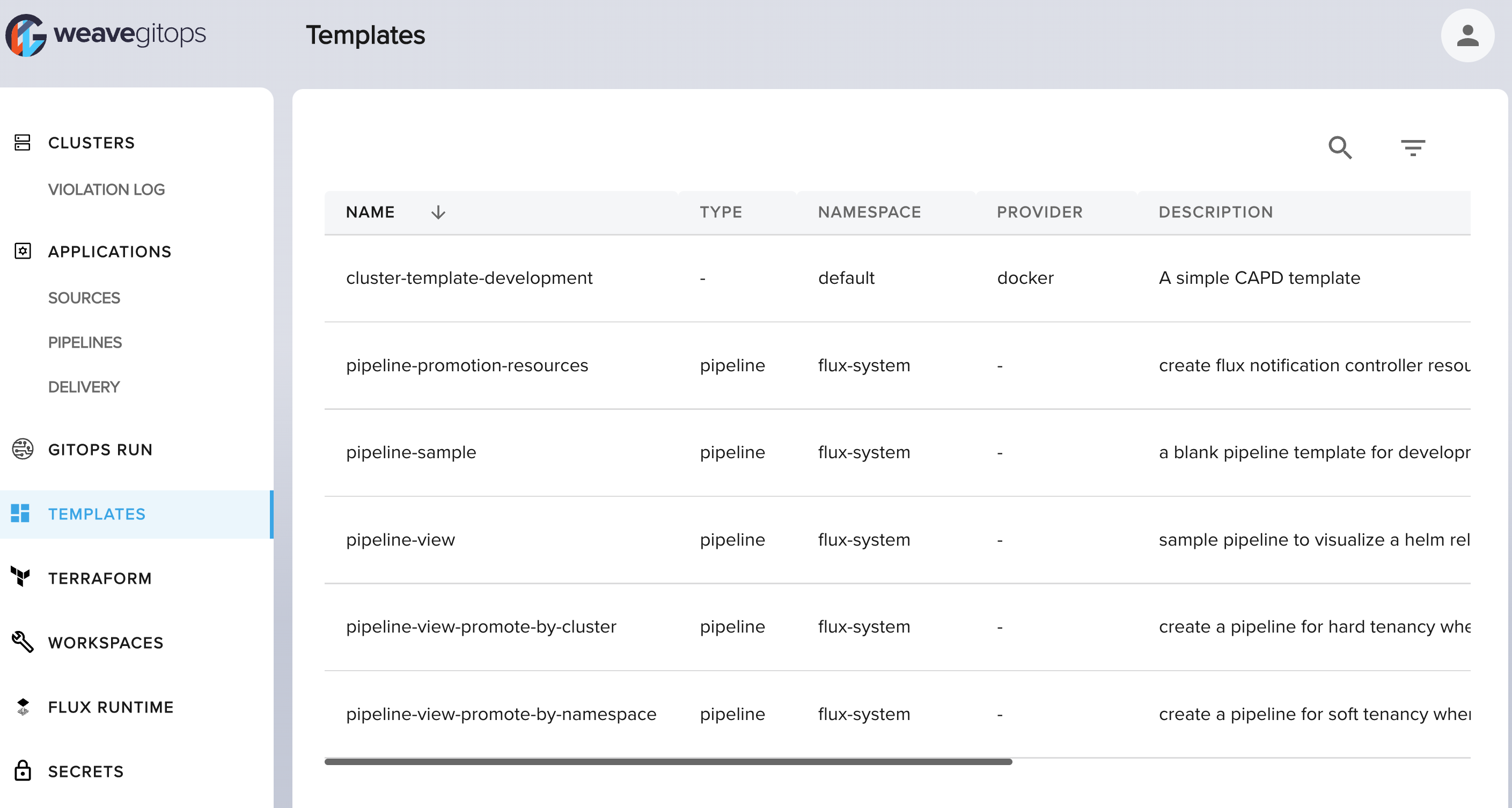Introduction Enterprise
GitOpsTemplates enable Application Developers to self-service components and
services easily through the Weave GitOps Dashboard.
With a GitOpsTemplate, any resource that can be expressed in yaml
(such as basic kubernetes resources, Flux primitives, TF controller, Crossplane, Cluster API)
can be templated into a standardised definition, available for use.
Templates are simple YAML files, which can be enriched with Parameters, Variables, Metadata and conditions.
Whan an Application Developer uses a Template via the GIU, the rendered
template is added to their GitOps repository via a PR. When merged and reconciled, the resources in
the template are created. These can be any resource, such as a MachinePool for
CAPI objects, a Flux Kustomization or a Terraform Controller resource.
The only restriction on GitOpsTemplates is that they are valid yaml. Beyond
that, a rendered template can create any resource desired ✨.

GitOpsTemplate or CAPITemplate?
The only difference between CAPITemplate and GitOpsTemplate is the default
value of these two annotations:
| Annotation | default value for CAPITemplate | default value for GitOpsTemplate |
|---|---|---|
templates.weave.works/add-common-bases | "true" | "false" |
templates.weave.works/inject-prune-annotations | "true" | "false" |